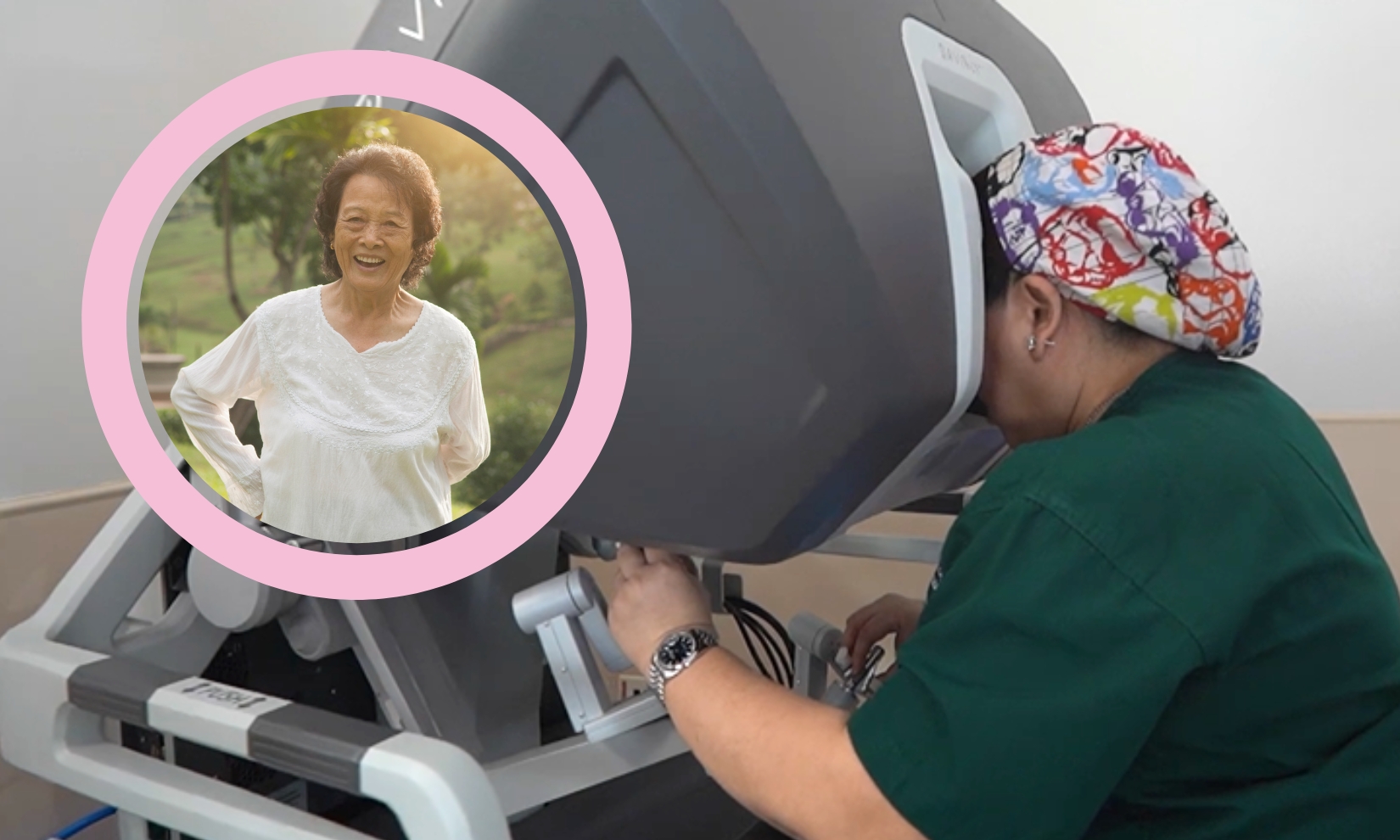Surgeries on the female reproductive system are so complex, a surgeon must perform with uncompromising precision to minimize bleeding, preserve the function of healthy organs and tissue, and avoid complications.
But even the most successful procedures can sideline a patient for weeks. One would need up to six (6) weeks to recover from an abdominal hysterectomy (the removal of the uterus, and possibly the cervix, ovaries, fallopian tubes, and upper vagina), and the same amount of time after a myomectomy (or surgery to remove uterine fibroids). Endometriosis resection (the removal of tissues that grow outside the uterus) can set you back by at least two (2) weeks, even if done through the minimally invasive laparoscopic surgery.
State-of-the-art robotic surgery has made downtime after going under the knife a virtual thing of the past. Since Makati Medical Center (MakatiMed) acquired the fourth-generation, computer-assisted robotic surgery system known as Da Vinci Xi in 2024, patients have been bouncing back in record time.
“A patient of mine who is a lawyer went in for surgery. I operated her on a Sunday,” explains MakatiMed Obstetrician-Gynecologist Jennifer Marie Jose, MD. “Would you believe that on Monday morning, she was attending a Zoom meeting, and on Monday afternoon she was in court?”
Post-surgical pain is also next to non-existent. Dr. Jose, who gives her patients five (5) pain killer tablets post-robotic-surgery, is surprised when they return for a follow-up consult one (1) week later, with all of the tablets intact.
“You know, in the United States, sometimes they send the patient home the same day [after robotic surgery],” says Dr. Jose. “I have tried it with some of my patients, those who are still young. If it is just a removal of an ovarian cyst, I can send them home the same day. But if I remove a big fibroid, or a big uterus with a lot of adhesions, I’ll keep them for a day or two.”
How robot-assisted surgery really work
Though robotic surgery has been around since the 1980s, it is a relatively new option in the Philippines. As such, there are misconceptions about it, the foremost of which is the belief that the robot performs the operation.
“That is the thinking of a lot of people. I have been asked that several times in different forums,” shares Dr. Jose. “It looks like it is the robot [doing the surgery] because it has a lot of arms. But it is still the surgeon who is in control.”
Indeed, with its imposing size and four (4) massive arms, the Da Vinci Xi looks like a character straight out of a science fiction movie. Yet despite its threatening appearance, it cannot function unless a trained surgeon makes it work.
Seated before a special console, the surgeon uses controls to make the Da Vinci Xi’s four arms perform dexterous surgical movements of the hands, fingers, and wrists. Looking through a monitor gives the surgeon a magnified, high-definition, 3D image of a patient’s organs. “It is like I am inside the body of a patient, beside the blood vessel and nerves,” the doctor reveals. This bodes for the most precise cuts, which in turn, results in minimal blood loss, less pain, fewer days in the hospital, and a speedier recovery.
Requiring only a few tiny incisions and less sutures than conventional surgery makes robotic surgery the ideal approach for surgeries of the pelvis. “The majority of surgeons who use robotic surgery all over the world are urologists for prostate surgery, and gynecologists for fibroid removal, sacrocolpopexy (the surgical treatment of pelvic organ prolapse), and hysterectomies,” says the doctor.
Elderly patients could certainly benefit from robotic surgery. “People discourage old people from undergoing surgery because they feel that they won’t get better—and if they do, recovery
is long and they will just get weak,” she says. “With robotic surgery, they get good results and their quality of life improves.”
Ultimately, it all boils down to cost. Compared to conventional open surgery and laparoscopy, robotic surgery is not cheap. But it will get you back on your feet much sooner, allowing you to work and get on with your life.
“It is like you are doing open surgery in a minimally invasive manner,” describes Dr. Jose of working with the Da Vinci Xi. “My hands turn out to be like the robotic instruments that go inside the body of the patient. So it is like I am just touching the inside, and I just put the blood vessels and the nerves aside. By doing this, the chances of complications are actually very minimal.”
“You are not compromising the condition of the patient,” she concludes. “You are actually giving the best because the patient will recover faster.”
Article based on the UNTV: Serbisyong Bayanihan guesting of Jennifer Marie M. Jose, MD last April 22, 2024.
For individuals needing surgery, consult with your MakatiMed physician if you are eligible for robot-assisted surgery. Got questions/concerns? Reach us via MakatiMed On-Call at (+632) 8888 8999 or at [email protected].
Follow our social media pages for more health-related content and for the latest updates: https://www.makatimed.net.ph/social-media-pages/









